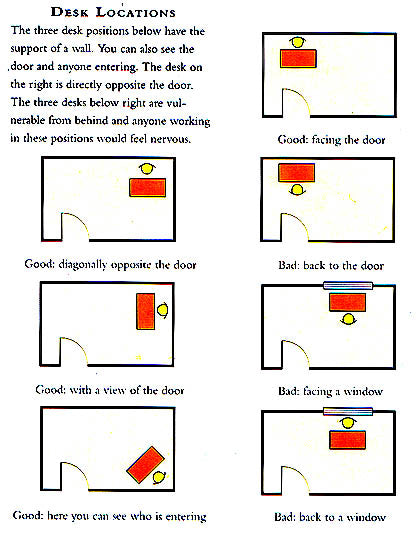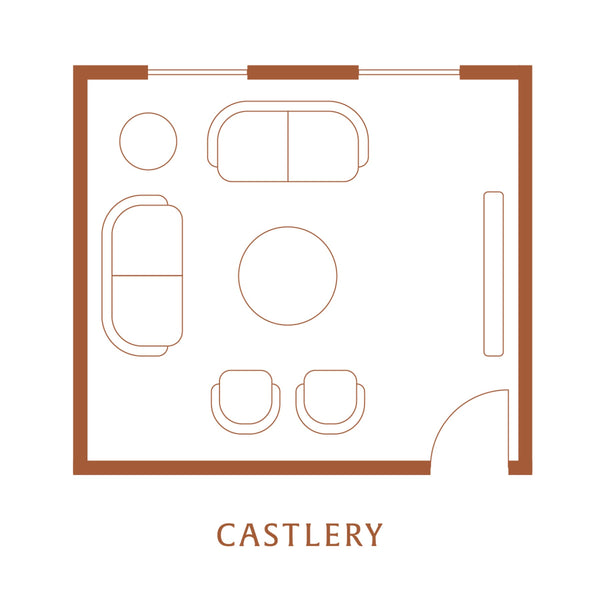Optimizing Your Living Room: The Ultimate Guide to Sofa and TV Layouts by Wehomz
Introduction
Your living room is more than just a space; it's the heart of your home, a sanctuary for relaxation, entertainment, and connection. At Wehomz, we understand that the perfect living room blends comfort with functionality, and at the core of this balance lies the strategic arrangement of your sofa and television. A well-thought-out layout can transform your living area into an inviting haven, enhancing both your viewing experience and overall comfort. This comprehensive guide, brought to you by Wehomz, will delve into the principles of optimal sofa and TV placement, offering insights and practical advice to help you design a living room that truly feels like home.
Understanding the Fundamentals of Living Room Layout
Before diving into specific arrangements, it's crucial to grasp the foundational principles that govern effective living room design. These elements ensure not only aesthetic appeal but also ergonomic comfort and seamless traffic flow.
1. The Importance of a Focal Point
Every well-designed room needs a focal point—a central element that draws the eye and around which other furniture is arranged. In many modern living rooms, the television naturally serves this purpose. However, it could also be a fireplace, a large window with a scenic view, or a prominent piece of art. Once your focal point is established, your sofa and other seating should be oriented to complement it, creating a cohesive and inviting space [1].

2. Ensuring Proper Traffic Flow
One of the most overlooked aspects of living room design is traffic flow. Imagine navigating your space without bumping into furniture or feeling cramped. Ideally, you should maintain clear pathways, allowing easy movement between different areas of the room. A general guideline suggests leaving at least 30-36 inches (76-91 cm) of space for main walkways between large furniture pieces. In smaller living rooms, this can be reduced to 24 inches (61 cm) if necessary [2]. This ensures that your living room remains functional and comfortable for everyone.
3. Balancing Aesthetics and Ergonomics
While visual appeal is important, comfort and health should never be compromised. Ergonomics plays a vital role in ensuring your sofa and TV setup supports your body properly, preventing strain and enhancing relaxation. This involves considering factors like viewing distance, screen height, and sofa dimensions, all of which we will explore in detail.
Optimal TV Placement for an Immersive Viewing Experience
The television is often the centerpiece of modern living rooms, and its placement significantly impacts your viewing comfort and overall room aesthetics. Achieving the ideal setup involves considering several key factors.
1. Ideal Viewing Distance
The distance between your sofa and TV is paramount for a comfortable and immersive viewing experience. Sitting too close can lead to eye strain, while sitting too far can diminish picture quality and detail. Industry experts and studies suggest an optimal viewing distance that correlates with your TV's screen size and resolution. For a 4K TV, a common recommendation is to sit at a distance of 1.5 times the TV's vertical screen size [3]. Another general guideline suggests a distance of 1.5 to 2.5 times the TV's diagonal screen size [4].
For example, for a 55-inch 4K TV, the optimal viewing distance would be approximately 7 feet (2.1 meters) [2].
2. Ergonomic TV Height
Beyond distance, the vertical placement of your TV is crucial for preventing neck and eye strain. The ideal height positions the center of the screen at eye level when you are comfortably seated on your sofa [5]. While mounting a TV above a fireplace can save space, it often results in a viewing angle that is too high, leading to discomfort. If you must mount it higher, consider a mount that allows for tilting the screen downwards to improve the viewing angle.

3. Minimizing Glare and Reflections
Natural light from windows and artificial light sources can cause glare on your TV screen, significantly impacting your viewing experience. Position your TV away from direct sunlight or bright windows. If this isn't possible, consider using blackout curtains or blinds to control ambient light. Strategic placement of lamps can also help minimize reflections.
Choosing the Right Sofa for Your Space and TV Layout
The sofa is the anchor of your living room, dictating comfort and contributing significantly to the room's overall feel. Selecting the right sofa involves considering its size, style, and ergonomic features in relation to your TV setup.
1. Sofa Size and Proportion
The size of your sofa should be proportionate to your living room and the overall furniture arrangement. A common design principle, often referred to as the
golden ratio, suggests that your sofa should be roughly two-thirds the length of the wall or width span of the room where it will be placed [2]. For instance, a 145-inch (368 cm) wall would ideally accommodate a 96-inch (244 cm) sofa. This ensures visual balance and prevents the room from feeling either too empty or too crowded.
2. Sofa Ergonomics and Comfort
Beyond aesthetics, the ergonomic design of your sofa is crucial for long-term comfort, especially when enjoying extended TV sessions. Key ergonomic considerations include seat depth, seat height, back height, and armrest height. Standard sofas typically have a depth between 31 and 40 inches (79-102 cm). A shallower depth promotes an upright sitting position, ideal for conversation, while deeper seats (25 inches or more) are better for lounging [6].
For optimal support, the seat height should allow your feet to rest flat on the floor with your knees at a 90-degree angle. The backrest should support the natural curve of your spine, and armrests should be at a comfortable height to support your arms without causing shoulder strain. According to ergonomic guidelines, a good sofa will have a back height of 75-88 cm, seat height of 40-45 cm, and armrest height of 57-70 cm [7].

Popular Sofa and TV Layout Ideas
Now that we've covered the fundamentals, let's explore some popular and effective sofa and TV layout configurations for various living room shapes and sizes.
1. Symmetrical Layout
This classic layout promotes balance and harmony. It typically involves two sofas facing each other, with a coffee table in between, and the TV positioned on one of the end walls. This arrangement fosters conversation and creates a formal yet inviting atmosphere. It works well in larger living rooms where ample space allows for clear walkways around the furniture [1].

2. L-Shaped Layout
An L-shaped sofa or a sectional is an excellent choice for maximizing seating and creating a cozy, defined entertainment zone. The longer side of the 'L' can be placed against a wall, with the TV on the opposite wall. This layout is particularly effective in open-concept living spaces or rooms that serve multiple functions, as it naturally delineates the living area. It also provides ample space for lounging and is highly conducive to TV viewing [1].

3. Floating Layout
If your living room has numerous windows or lacks sufficient wall space, a floating layout can be a creative solution. This involves pulling your sofa and other furniture away from the walls, creating an 'island' in the center of the room. The TV can be mounted on the most suitable wall, or even placed on a console behind the floating sofa if space allows. This approach adds a sense of openness and can make a room feel larger, while still maintaining a clear focal point for TV viewing [1].
4. Layouts for Long, Narrow Rooms
Long and narrow living rooms present unique challenges. The key is to avoid lining all furniture along one wall, which can make the room feel like a hallway. Instead, consider placing the sofa on one of the longer walls and the TV on the opposite wall. You can also create distinct zones within the room using area rugs to define different functions, such as a TV viewing area and a reading nook [1].
5. Layouts for Small Living Rooms
In smaller living rooms, every inch counts. Opt for compact sofas, loveseats, or armchairs that don't overwhelm the space. Wall-mounted TVs are highly recommended to save floor space. Consider multi-functional furniture, such as ottomans with storage or coffee tables that can double as extra seating. The goal is to create a functional and comfortable space without sacrificing style [8].
Wehomz's Expert Tips for Your Living Room
At Wehomz, we believe that a well-designed living room enhances your daily life. Here are some additional tips from our experts to help you perfect your sofa and TV layout:
•Measure Everything: Before purchasing any furniture, meticulously measure your living room, including walls, doorways, and windows. Use masking tape on the floor to visualize furniture placement and ensure proper clearances.
•Consider Lighting: Beyond minimizing glare, think about ambient lighting. Dimmers can help adjust the mood for TV watching, while task lighting (like floor lamps next to your sofa) is perfect for reading.
•Cable Management: A clean and organized look is essential. Plan for discreet cable management solutions to hide unsightly wires from your TV and media devices.
•Accessorize Thoughtfully: Once your main furniture is in place, add accessories like throw pillows, blankets, and artwork to personalize your space and add warmth. Ensure artwork is proportionate to the furniture it accompanies; for example, a piece of art above a sofa should be approximately two-thirds the length of the sofa [1].
•Test and Adjust: Don't be afraid to experiment! Once your furniture is in place, sit on your sofa, watch TV, and move around the room. Make small adjustments until the layout feels perfectly comfortable and functional for your lifestyle.
Conclusion
Designing the best sofa and TV layout for your living room is an art that balances aesthetics, ergonomics, and functionality. By understanding the principles of focal points, traffic flow, and ergonomic considerations, and by exploring various layout options, you can create a living space that is both beautiful and incredibly comfortable. At Wehomz, we are dedicated to helping you achieve your dream home with furniture that combines quality, style, and thoughtful design. Explore our collection today and take the first step towards a living room that truly reflects your unique taste and provides the ultimate comfort for you and your loved ones.
References
[1] The Spruce. (2024, December 17). 12 Rules to Arrange Living Room Furniture. https://www.thespruce.com/rules-for-arranging-furniture-2213418
[2] Havenly. (2024, November 25). How to Design a Stylish & Functional Living Room in 12 Simple Steps. https://havenly.com/blog/living-room-layout?srsltid=AfmBOopfGStpgFqwX23qSo_aRGcN1jO_OAYao5lp5cjSVe_QPtrMQUvX
[3] Sony. (2025, July 15). What is the recommended viewing distance for televisions? https://www.sony.com.sg/electronics/support/articles/00008601
[4] FPD Vision. (2025, March 25). The Science Behind Perfect TV Viewing Distance: Complete Guide. https://fpdvision.com/blogs/news/smart-tv-viewing-distance-guide?srsltid=AfmBOoon-v-8eJsQuaFPycDXwe4-GHyCDTTAoxb38zVGSSgO0ERk5qt2
[5] Contempo Space. (2023, August 17). Mastering TV Placement: An Expert Guide for Optimal Viewing. https://www.contempospace.com/blog/modern-television-placement/?srsltid=AfmBOop7ebwiodt8k-eMctIoFlauUp2KlSs5cure7XRhaxD-OU5XIBRv
[6] Stay Homebody. (2024, October 16). Perfect Sofa Secrets: Size Up Your Space for Style & Comfort. https://stayhomebody.com/blogs/comfy-101/sofa-size-guide-comfort-style?srsltid=AfmBOopEl2HRKTn9k2Jxb-_vsFJ-ddOLC35Wl__rlvdPZz7DzVDQFHUa
[7] FCI London. (2023, February 3). The Role of Ergonomics in Luxury Sofa Design. https://www.fcilondon.co.uk/blog/the-role-of-ergonomics-in-luxury-sofa-design/
[8] Havenly. (2025, July 2). 16 Designer Small Living Room Ideas With TV.





















